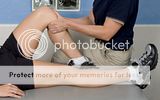 As I was getting ready this morning I was listening to the news on the radio. There was a report that said that scientists are now scaling down their predictions for the rise in obesity for children in Britain since the rate of rise was falling significantly. Scientists attribute this to people taking on board the healthy eating/regular exercise message and being more aware of the obesogenic environment in which they live.
As I was getting ready this morning I was listening to the news on the radio. There was a report that said that scientists are now scaling down their predictions for the rise in obesity for children in Britain since the rate of rise was falling significantly. Scientists attribute this to people taking on board the healthy eating/regular exercise message and being more aware of the obesogenic environment in which they live. Obesogenic environment. Wow! That's a new one on me. I love new words. Words are what we think with, the greater our vocabulary the clearer our thinking and the more articulate we are in expressing our thoughts. I also like the idea that when we invent new words we also invent new concepts or new ways of looking at something.
Obesogenic basically means 'fat-causing' or 'fat-creating'. I did a quick search on this word and it actually came into existence in 1996 though it has not found its way into mainstream vocabulary.
The concept of living in an environment that can contribute to obesity is an interesting one. We like to think of ourselves as being masters of our environment - shaping it to suit our needs. Over the centuries we have claimed the land as our own, cut down forests, established settlements, built roads and bridges, invented several convenient and fast transport methods, learnt to cultivate and manufacture our own food, developed industry.....the list is endless and it is all to make life better for us. We are indeed masters of our environment!
Except....maybe we are not. Our environment is controlling us - its making us fat and unhealthy. We have become the products of our environment not the controllers of it. It seems to have gotten too big and complicated and now it's taken on a life of its own. We have built 'dormitory' communities that are miles from schools or the workplace, we have out of town shopping malls that are only accessible by car - so we have to drive long distances every day. Our cities are big, crowded and dangerous so we don't walk or cycle too much through them. Our jobs have become sedentary and our leisure pursuits even more so - we sit a lot. We have invented every convenience we can think of to make our lives easier - gadgets to reduce the burden of household chores even machines to heat up pre-prepared food so that we don't have to cook!
Some of us rail against the toxic effects of our environment. We exercise regularly, we try and eat healthily and we try not to poison the environment further - we can't control it as individuals, at least not the wider environment but we can control our local environment, our homes.
I've been thinking about whether my house is an obesogenic environment. The first place to look is the kitchen - are there lots of obesogens lurking in the cupboards and fridge? My family are all cheese lovers so there is a big container with various cheeses in it in the fridge, and, okay, there is a box of small cakes in the cupboard and a few packets of crisps and two boxes of Pringles....but that's it! The rest of the fridge contains low fat yogurts, some ham, lots of fresh vegetables, fruit and salad. I cook a family meal each day and rarely use convenience foods - in fact my freezer doesn't contain a single one at the moment. The freezer is basically filled with bread, frozen veg, meat, fish and seafood. I think there might also be a cheesecake and some ice cream too - but you've got to live a bit!
So I don't think my kitchen is too much of an obesogenic environment. What about the rest of the house? Well, it's on two levels so we have to use stairs a lot! We have converted a garage into a gym so we can exercise at home - and do! We have our fair share of gadgets - televisions, DVD players etc. However, I absolutely refuse to have a TV in the bedrooms or kitchen - just a personal bugbear! I think our house is okay - it's not making us fat.
If I turn my attention to my local community, is that an obesogenic environment? I live in a suburban area a few miles from the city centre and only 1 mile from open countryside. It is an old, well established suburb so it has local facilities such as local shops, post-office, banks etc. I don't use the local shops nearly as much as I could as the nearest supermarket is only about 2.5 miles away. There are local bus routes into town and to my place of work - but I rarely use them, preferring the convenience of my car. I could improve my behaviour on these counts. I could walk to my karate club, it would take about 25 minutes but I don't. In fact the car is the biggest environmental factor controlling my behaviour - it is potentially an 'obesogen'.
Fortunately my love of the car is balanced by my love of physical activity and the countryside. I train in martial arts 3 times a week, do some additional training at home and most weekends we get a decent hike in the countryside. So I think on balance I live fairly symbiotically with my environment.
So, what about your home and local environment? Is your house making you fat? What's your biggest obesogen?












